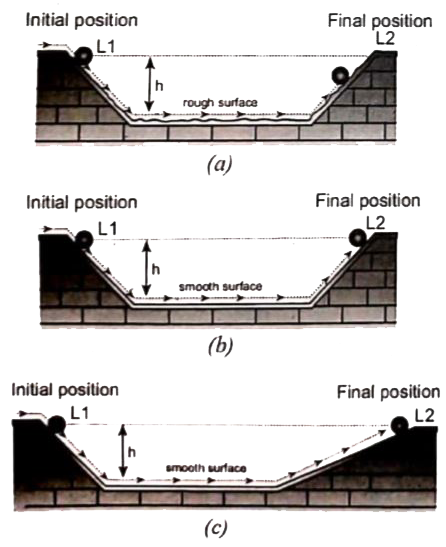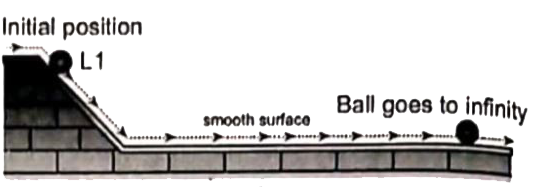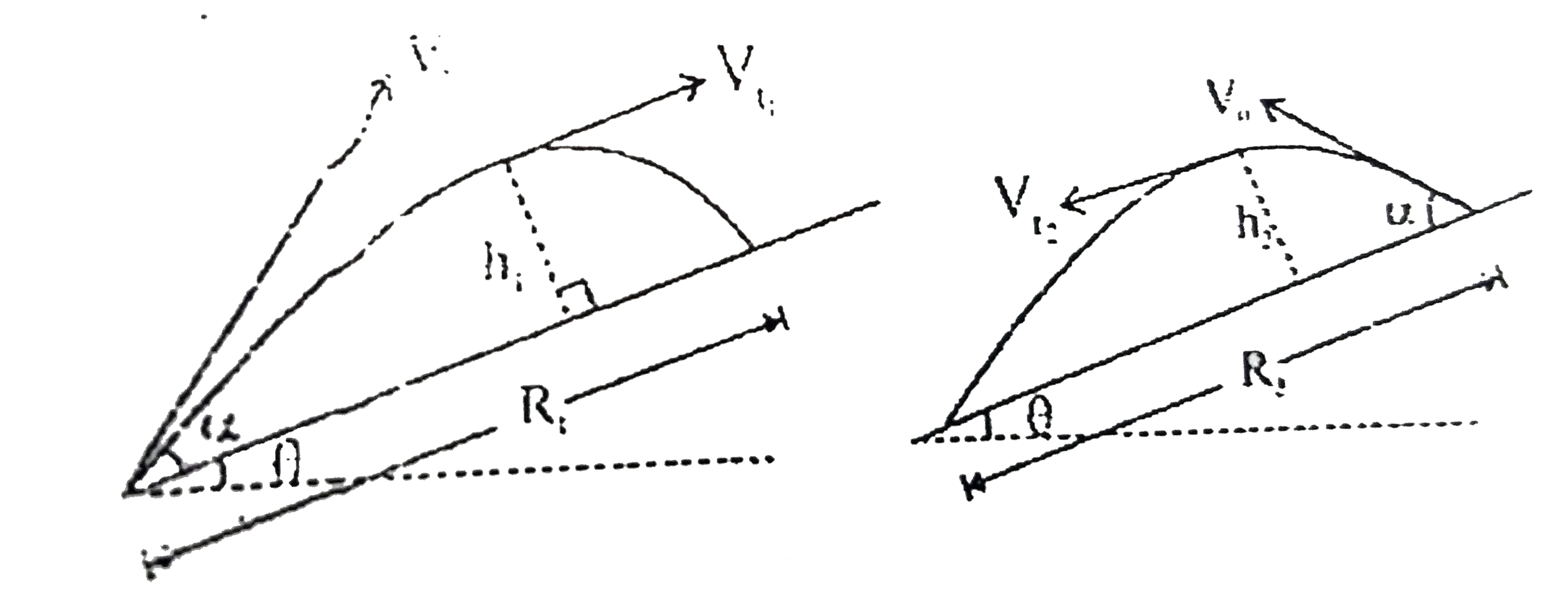Describe galileo experiments concerning motion of object on inclined planes


galileo 's experiment with the second plane (a) at same inclination angle as the first (b) with increased smoothness (c ) with reduced angle of inclination (d) with zero angle of inclination
When a ball rolls from the top of an inclined plane to its bottom , it move some distance after reaching the groung continues to move on to another inclined plane of same angle of inclination . It is shown in the figure (a) . The ball reaches almost the same height (h) from where is was released (L1) in the second plane (L2) it is shown in the figure (b) by increasing the motion of the ball is then observed by varying the angle of inclination of the second plane keeping the same smoothnese . If the angle of inclinations is made zero ,then the ball moves forevers in the horizontal idea were true , the ball would not have moved in the second plane even if its smoothness is made maximum since no force acted on it in the horizontal direction.
Topper's Solved these Questions
- LAW OF MOTION BOOK - PREMIERS PUBLISHERSCHAPTER - LAW OF MOTION EXERCISE - OTHER IMPORTANT QUESTIONS & ANSWERS (V Conceptual Question )
16 Videos
- LAW OF MOTION BOOK - PREMIERS PUBLISHERSCHAPTER - LAW OF MOTION EXERCISE - OTHER IMPORTANT QUESTIONS & ANSWERS (VI Numerical Problems)
62 Videos
- LAW OF MOTION BOOK - PREMIERS PUBLISHERSCHAPTER - LAW OF MOTION EXERCISE - OTHER IMPORTANT QUESTIONS & ANSWERS (III Short Answer Question )
42 Videos
- KINETIC THEORY OF GASESBOOK - PREMIERS PUBLISHERSCHAPTER - KINETIC THEORY OF GASESEXERCISE - OTHER IMPORTANT QUESTIONS & ANSWERS (VI. Conceptual Questions.)
8 Videos
- MOTION OF SYSTEM OF PARTICLES AND BODIESBOOK - PREMIERS PUBLISHERSCHAPTER - MOTION OF SYSTEM OF PARTICLES AND BODIESEXERCISE - OTHER IMPORTANT QUESTIONS & ANSWER (NUMERICAL PROBLEMS)
60 Videos
Similar Questions
Knowledge Check
By increasing the angle of inclination, the M.A. of an inclined plane
Adecreases.Bincreases.Cremains the same.Ddepends on the load to be raised.A box is placed on an inclined plane and has to be pushed down.The angle of inclination is
Aequal to angle of frictionBmore than angle of frictionCequal to angle of reposeDless than angle of reposeTwo balls are thrown from an inclined plane at angle of projection with the plane, one up the incline and the other down the incline as shown. Which one is not correct?
 Ah1−h2=v20sin2α2gcosθBT1=T2=2v0sinαgcosθCR2>R1Dvt1=vt2
Ah1−h2=v20sin2α2gcosθBT1=T2=2v0sinαgcosθCR2>R1Dvt1=vt2
An object is placed between two plane mirrors inclined at an angle to each other. If the number of images formed is 7 then the angle of inclination is -
View SolutionA block of mass m is released from the top of fixed inclined smooth plane. if theta is the angle of inclination then vertical accelertion of block is
View SolutionA block is at rest on an inclined plane making an angle α with the horizontal. As the angle of the incline is increased the block start slipping when the angle of inclination becomes θ then coefficient of friction is equal to
View SolutionAn object is placed between two plane mirrors inclined at an angle to each other. If the number of images formed is 7 then the angle of inclination is -
View SolutionA block is at rest on an inclined plane making an angle α with the horizontal. As the angle of the incline is increased the block start slipping when the angle of inclination becomes θ then coefficient of friction is equal to
View Solution
